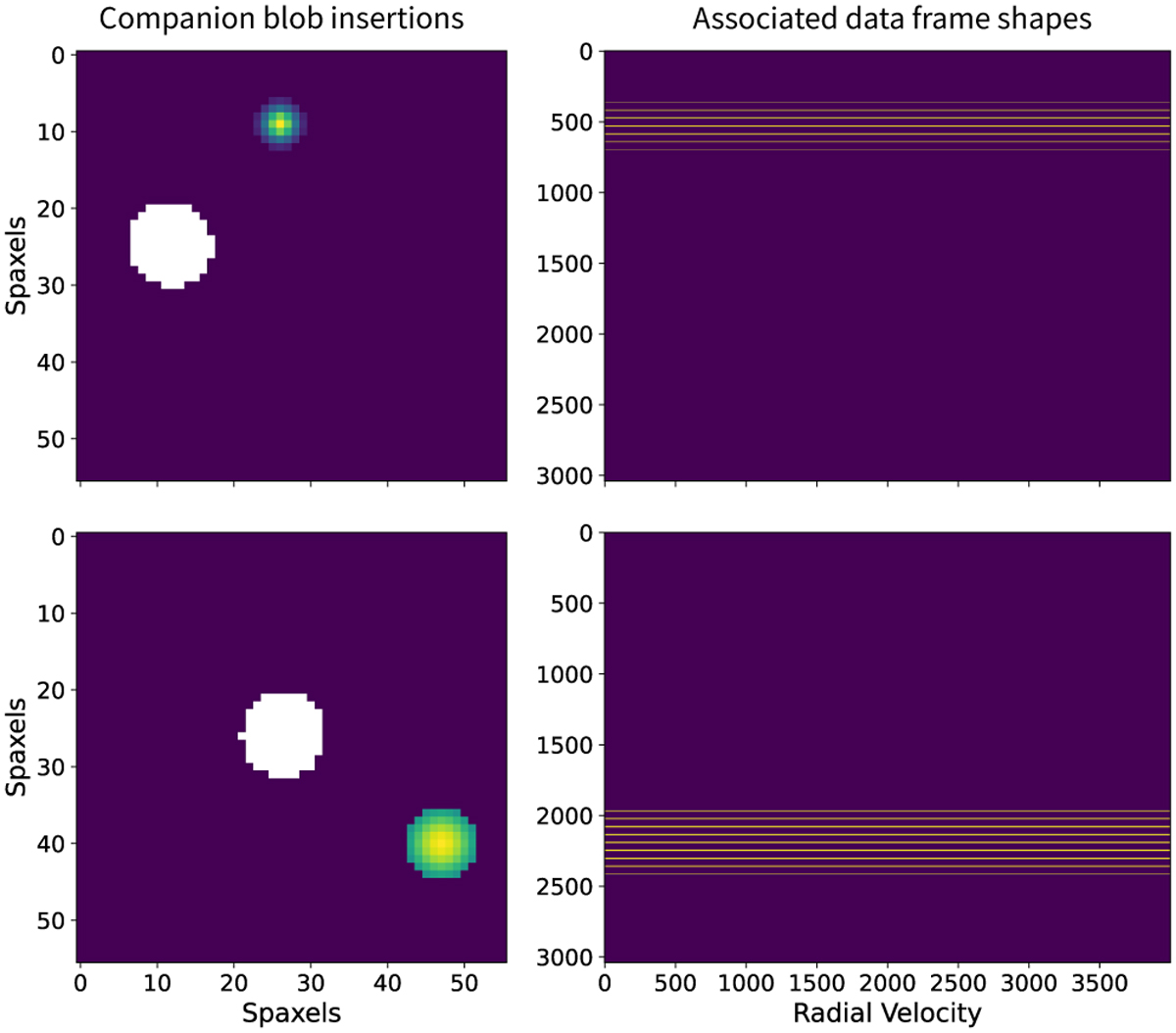Fig. 9

Download original image
Spatial decorrelation in two IFU cubes of the structured mock dataset for directly imaged companions. Left panels: brown dwarf signals inserted in a structured manner, as varying Gaussian decaying ellipses within a delimited aperture, showing variations in position, size, and shape. The white areas indicate removal of real companions. Right panels: plots illustrating datasets after flattening and transformation, with the horizontal axis representing radial velocity and the vertical axis representing stacked spatial dimensions. Visible lines denote spax-els with inserted planetary signals, showing variations based on the inserted planets’ properties. This method prevents the ML algorithm from learning redundant spatial artefacts; it emphasises learning from cross-correlation patterns in the spaxel dimension.
Current usage metrics show cumulative count of Article Views (full-text article views including HTML views, PDF and ePub downloads, according to the available data) and Abstracts Views on Vision4Press platform.
Data correspond to usage on the plateform after 2015. The current usage metrics is available 48-96 hours after online publication and is updated daily on week days.
Initial download of the metrics may take a while.


